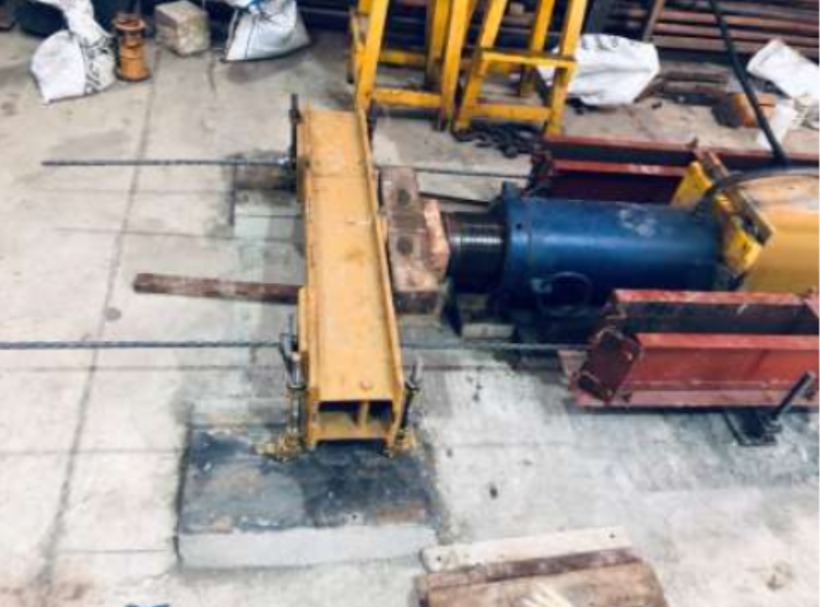This system innovates prestressed concrete beam construction by using Basalt Fibre Reinforced Polymer (BFRP) bars instead of traditional steel. It includes a T-frame structure with a spandrel beam and steel formworks. BFRP bars are pre-tensioned using a hydraulic jack, casting concrete around them, and then releasing the prestress to reinforce the concrete. The system aims to improve durability and reduce corrosion concerns compared to steel prestressing methods.
Traditional prestressed concrete (PSC) beams using steel strands are susceptible to corrosion, limiting their durability. The challenge lies in developing a reliable system using Basalt Fibre Reinforced Polymer (BFRP) bars for prestressing, overcoming complexities in material behavior and lack of established design guidelines. This system aims to address these challenges by introducing a novel method for constructing and prestressing PSC beams using non-corrosive BFRP bars.
- Integration of Basalt Fibre Reinforced Polymer (BFRP) Bars: The proposed system offers a unique approach to prestressed concrete beam construction by integrating Basalt Fibre Reinforced Polymer (BFRP) bars.
- End Block Elimination: Unlike traditional steel methods, it eliminates the need for end blocks, simplifying construction and reducing costs.
- Enhanced Structural Durability: The use of BFRP bars enhances durability by mitigating corrosion issues and offers potential for widespread application in infrastructure projects.
- Use of Stiffener Plates: The system's design includes innovative features such as adjustable mechanisms and stiffener plates, tailored for efficient and reliable prestressing operations using non-metallic, high-strength BFRP materials.
The prototype features Basalt Fibre Reinforced Polymer (BFRP) bars, offering exceptional durability and corrosion resistance compared to traditional steel reinforcement. This makes it ideal for long-lasting and sustainable infrastructure projects.
The prototype includes a T-frame with ISMB-450 beams and an ISMB-150 spandrel beam, supported by steel formworks made from EN250 material. It employs 8 mm diameter BFRP bars threaded through holes in the beams and anchored with mechanical wedges. A 50T hydraulic jack applies pre-tensioning force, supported by adjustable bolts and rubber rollers for precise alignment and smooth operation. This setup demonstrates BFRP's lightweight properties, ease of handling, and suitability for environments requiring robust, corrosion-resistant materials.
The research group will be using the developed system to prestress beams made of geopolymer concrete and glass fibre reinforced polymer bars.
3
The system reduces environmental impact by BFRP bars, which are non-corrosive and have lower carbon footprint compared to steel. It mitigates the corrosion issues and hence enhance the lifespan of infrastructure. It also reduces maintenance costs over the lifetime of structures due to BFRP's durability and lower maintenance requirements.
- Infrastructure Construction: Bridges, viaducts, flyovers, and other large-span structures where durability and long-term performance are critical
- Building Construction: High-rise buildings, parking structures, and residential complexes requiring strong and durable concrete elements
- Transportation: Railway sleepers, tunnel linings, and other transportation infrastructure benefiting from lightweight and corrosion-resistant materials
- Environmental Engineering: Applications in water treatment plants, dams, and coastal structures due to BFRP's resistance to corrosion and environmental degradation
- Other Relevant Industries: Materials Science and Manufacturing
Geography of IP
Type of IP
201821038501
462037

